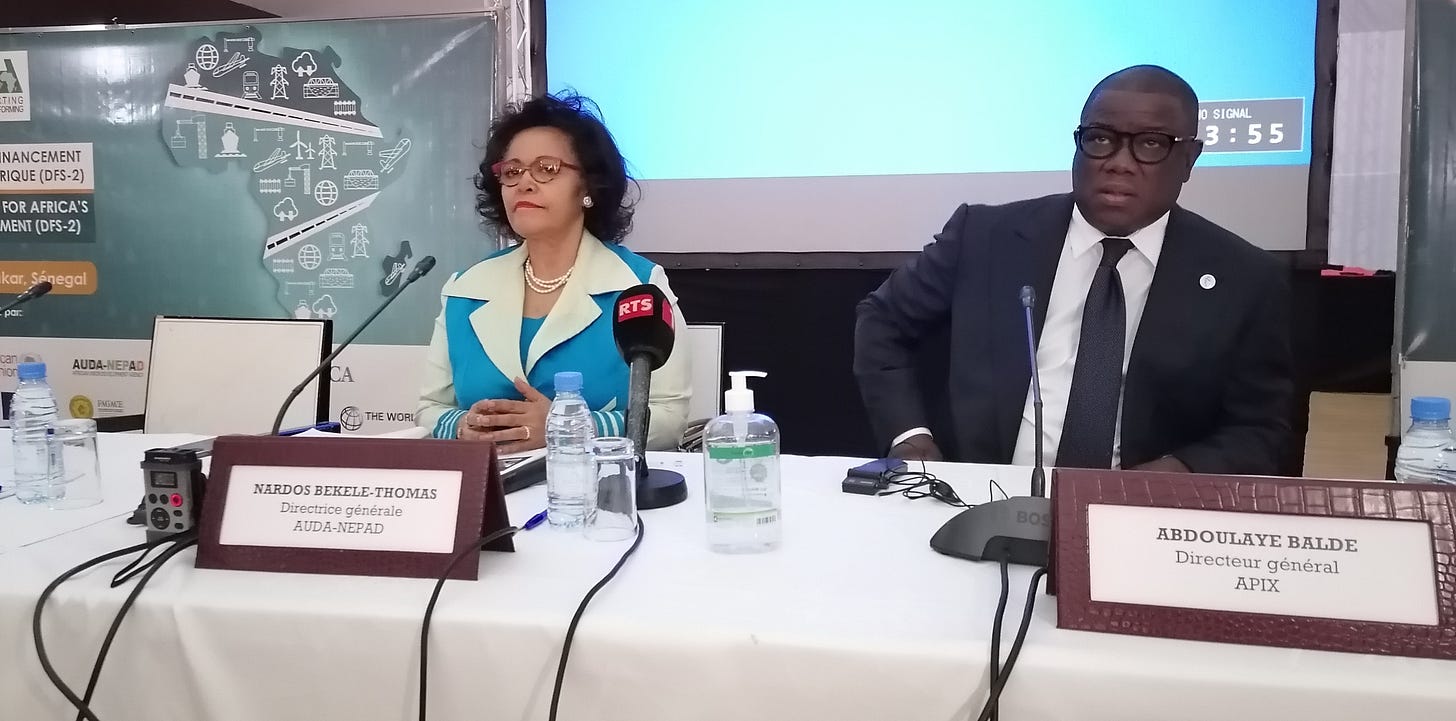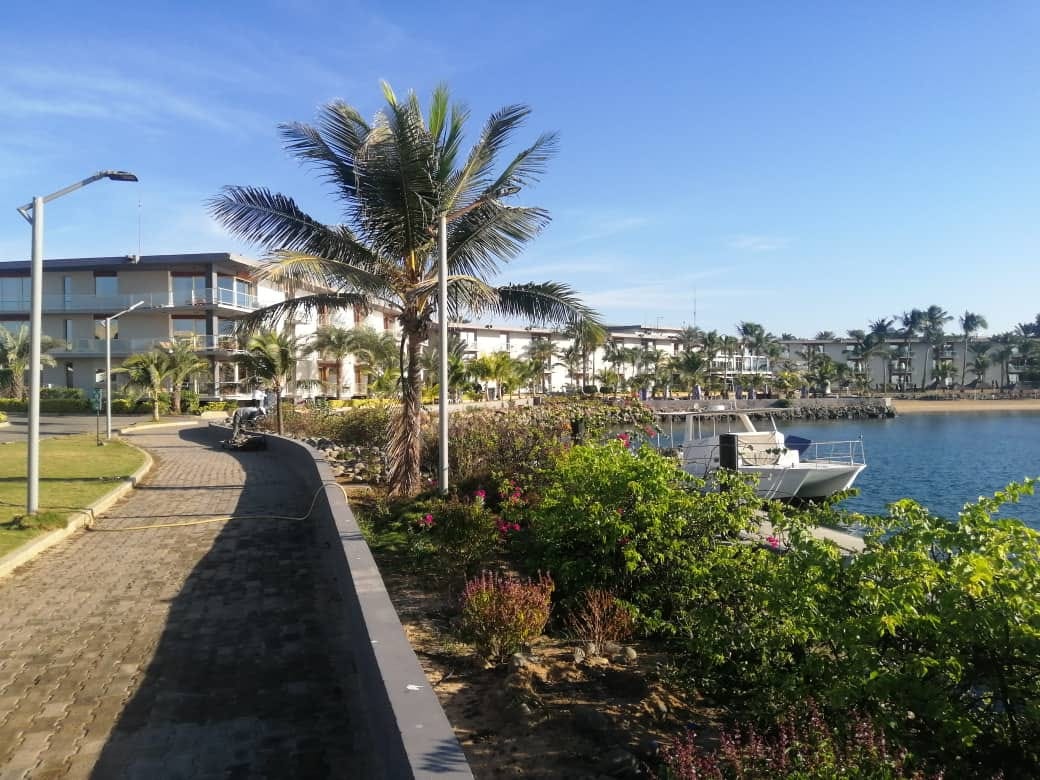PIDA DECADE & BEYOND – Financing, regional integration and fostering trade in Africa
PIDA has clocked over a decade since it inception and turned into a backbone of enhancing regional integration fostering enhanced connectivity among African populations in different communities

LILONGWE, Malawi (Planet Defence) – The African Union Development Agency - NEPAD has been implementing a continental focused Programme for Infrastructure Development in Africa (PIDA) to overcome regional connectivity challenges by developing transformative infrastructure and spur economic development regionally.
Since its inception in 2010, PIDA has now clocked over ten years and has turned into a backbone of enhancing regional integration fostering enhanced connectivity. It aims to fuel intra-Africa trade, facilitate movement of people, and position Africa as a global economic player. With reduced business costs and unrestricted flow of capital and talent, PIDA paves the way for a prosperous and interconnected Africa.
As a continental infrastructure catalysing vehicle, PIDA has driven remarkable progress in the areas of transport, energy, Information, Communication Technology (ICT), and transboundary water resources across Africa. Thanks to AUDA-NEPAD’s dedicated efforts, PIDA projects have transitioned from planning to active stages, with many now operational, under construction, in financial transactions, or undergoing structural development.
Decade of PIDA milestones
To date across the Africa continent close to 30 million people gained access to electricity, with current overall access to electricity at around 44 percent. There has been a slight increase in intra-Africa exports to 16 percent of trade due to road and rail infrastructure improvements to connects traders.
Through PIDA, it has enabled the water storage infrastructure needed for food production and trade. As part of scaling up connectivity, the ICT broadband penetration is now pegged at more than 25 percent, exceeding the initial 10 percent target.
One of the intended outcomes of PIDA is also to address economic marginalisation and social exclusion issues by facilitating creation of economic opportunities and decent employment among populations in regional economic communities where different development programmes are being implemented.
The construction and operation phases of PIDA have resulted in 112,900 direct and 49,400 indirect jobs created as part of employment hence supporting livelihoods across the continent.
By the end of 2020, the total investment commitments had exceeded the PIDA Priority Action Plan 1 (PAP 1) initial estimation by USD 14 billion (20 percent above the initial target), reaching USD 82 billion.
Different financing sources for PAP 1 have been allocated, including USD 34.35 billion (42 percent) from African Union member states, USD 19.67 billion (24 percent) from Infrastructure Consortium for Africa members (including World Bank Group, AfDB, ICA MDBs, and DFIs), USD 19.42 billion (24 percent) from the People’s Republic of China, USD 2.28 billion (3 percent) from the private sector, and USD 5.88 billion (7 percent) from other sources.
The portion of private sector financing (3 percent) of PIDA projects has been particularly low when compared with other emerging economies, such as India (19 percent) and Mexico (16 percent).
The ownership principle is critical to the success of infrastructure development projects promoted by PIDA across Africa. Its principle is based on the belief that infrastructure development projects must cater, first and foremost, to the needs of African countries.
With this in mind, it is necessary to acknowledge that the most significant source of financing commitments to PIDA PAP 1 (42 percent) comes from African Union member states. Failure to consider ownership may lead to poor implementation and eventual failure of infrastructure projects.
Dakar Financing Summit
Speaking during the Dakar Financing Summit (DFS - 2) in February, Nardos Bekele - Thomas, Chief Executive Officer, Africa Union Development Agency (AUDA-NEPAD), cited climate change and environmental sustainability as key considerations to be mainstream in the design of the 2nd Programme for Infrastructure Development in Africa Priority Action Plan (PIDA PAP II) adopted by the Assembly of heads of state and government of the African Union in 2021.
“Based on our experience implementing PIDA Priority Action Plan (PAP 1), the second PIDA Priority Action Plan will take climate change into consideration; green and sustainable infrastructure will be our focus,” Bekele-Thomas told media in Dakar, Senegal while taking into account the uncertainties brought by climate change effects.
“AUDA-NEPAD has come up with a mechanism, processes and tools to ensure the (PIDA PAP II) projects are sustainable. The PIDA quality label under our service delivery mechanism will ensure people are at the centre of our infrastructure development through consultations with communities, and clear indicators. There are many other tools developed to foster sustainable infrastructure development in Africa,” Thomas told the media at Terrou-Bi Hotel on the shore of the Atlantic Ocean.
President Paul Kagame of Rwanda who attended the meeting underscored the importance of infrastructure development adding it is a means to create prosperity and opportunity for people.
Building Africa’s infrastructure requires us to work closely together both as governments and with the private sector, Kagame offered the advice.
“In fact, this also helps to operationalise with full capacity the African continental free trade area. It is part of our wider version as outlined in Agenda 2063 to build a more secure and prosperous Africa for all of us. Let us seize the momentum to make faster progress towards our shared goals. We cannot be satisfied without business as usual.” Kagame stressed.
The PIDA Priority Action Plan (PIDA PAP II), to be implemented over a ten-year period (2021– 2030), is a $160 billion-worth basket of 69 projects covering the energy, ICT, transportation and water sectors.
African heads of state, private investors and development partners converged in Dakar in February to raise the necessary financing needed to accelerate the implementation of 20 priority projects under PIDA PAP II.
DFS-2 sought to mobilize more African private sector participation around 20 world-class infrastructure projects defined as priorities for boosting socio-economic development and intra-African trade under the African Continental Free Trade Area (AfCFTA).
The projects focused the areas of energy, transport, water or information and communication technologies (ICTs) were presented to the heads of states during the Summit as well as private investors and development partners.

Lessons learnt and future perspectives
Over the past decade, several important lessons have been learned in the context of PIDA that can be applied to achieve Africa's infrastructure goals. These lessons can be summarized as follows:
• Leveraging innovative opportunities: PIDA can expedite project implementation by embracing emerging opportunities in technology, innovative infrastructure sources, and financing. Advancements in technology, digitalisation, and renewable energy offer new avenues for infrastructure development, fostering connectivity, innovation, job creation, and economic growth. Private sector funding, green bonds, and climate financing should be harnessed to increase investment in PIDA projects.
• Scaling up successful projects: PIDA has shown the importance of regional integration and cooperation, especially in the ICT sector, where it has exceeded its targets. It is crucial to replicate successful projects and share best practices across Africa, emphasizing documentation and experience-sharing through platforms like the Virtual PIDA Information Centre (VPIC) to empower countries.
• Addressing capacity and funding challenges: The next generation of PIDA projects should tackle challenges related to inadequate capacity for project preparation and limited funding availability. Strengthening public-private partnerships, improving feasibility studies, and streamlining regulatory frameworks can enhance investment attractiveness and bridge financing gaps. Additionally, capacity-building and good governance practices are essential to ensure efficient project delivery.
• Sustainability and long-term impact: Infrastructure maintenance is often overlooked in Africa, so future PIDA projects should incorporate systemic maintenance plans and financing strategies. Furthermore, projects should prioritize environmental, social, and economic sustainability by integrating green initiatives, renewable energy, and climate resilience. Promoting social inclusivity and gender equality in infrastructure planning and implementation will ensure equitable growth.
• Inter-institutional collaboration and partnerships: Collaborative efforts among African Union institutions, Regional Economic Communities (RECs), development partners, and the private sector have been integral to PIDA's success. These partnerships must be strengthened to mobilize resources, share expertise, and facilitate knowledge exchange, ensuring a harmonized approach to infrastructure development in Africa.
By integrating these lessons into PIDA's future endeavours, Africa can address its infrastructure deficit, promote sustainable development, and foster economic growth and connectivity across the continent.
* Additional information AUDA-NEPAD




